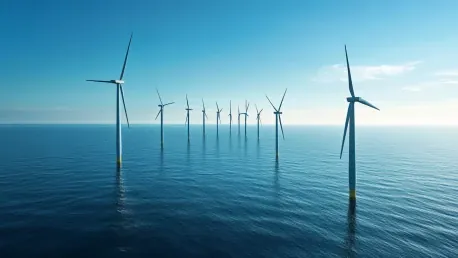The challenges encountered by Leading Light Wind, an American-founded initiative to develop a wind farm off Long Beach Island, New Jersey, underscore the inherent complexities of renewable energy projects. This project, which recently requested a pause from the New Jersey Board of Public Utilities (BPU) due to difficulties in securing a manufacturer for its turbine blades, represents a broader industry struggle. Although the formal pause request was submitted in July, it has only come to light recently, shedding new light on the turbulent conditions in the wind power sector.
Emerging Issues in Wind Power
Market Dynamics and Industry Turbulence
The broader market conditions impacting the wind power industry have played a significant role in Leading Light Wind’s predicament. Recent shifts in market dynamics and supply chain disruptions have created an environment of turbulence and uncertainty for many renewable energy initiatives. Supply chain issues, in particular, have made it increasingly challenging for projects to proceed as planned. These shifts have resulted in broader delays and financial complications, affecting not just Leading Light Wind but numerous similar ventures globally.
The difficulty in securing reliable manufacturers for critical components like turbine blades is becoming a growing concern. This issue is symptomatic of the deeper supply chain problems that many industries are facing today. For offshore wind projects, which require a high degree of coordination and specialization, these supply chain disruptions can be particularly crippling. Companies must now navigate these challenges by seeking new partnerships and perhaps even policy interventions to stabilize their supply chains. Thus, the delays faced by Leading Light Wind are a reflection of a wider and more systemic issue within the industry.
The Role of Technological Advancements
Shifts in technological standards and requirements further complicate the development of offshore wind farms. As renewable energy technologies evolve, so too do the specifications for components like turbine blades. These evolving requirements mean that manufacturers must continually update their designs and production processes, which can result in increased costs and delays for projects already in the pipeline. Leading Light Wind’s struggle to find a suitable manufacturer suggests that the rapid pace of technological change is outstripping the industry’s current capacity to adapt.
Adapting to these changes necessitates a significant investment in research and development, which not all companies are prepared to undertake. This reluctance can create bottlenecks in the advancement of new projects, as seen in the case of Leading Light Wind. Companies must balance the need for innovation with the practicalities of maintaining an operable supply chain. Still, failure to adapt can spell doom for projects reliant on cutting-edge technology, making strategic planning and investment in R&D crucial for future success.
The Importance of Strategic Adjustments
Policy Interventions and Market Solutions
Given the challenges faced by the wind power industry, there is a growing consensus that collaborative efforts and strategic adjustments are necessary. Policy interventions might provide the needed stability and support to weather the current market uncertainties. Government initiatives and incentives could play a crucial role in mitigating supply chain issues and encouraging investment in renewable technology. Partnerships between the public and private sectors could also facilitate more resilient supply chains, ensuring that projects have access to the necessary resources.
Market solutions are equally important. Companies might need to reconsider their business models to become more flexible and resilient in the face of supply chain disruptions. Developing closer ties with manufacturers and diversifying their supplier base could reduce the risks associated with relying on a single provider. Additionally, forming alliances with other stakeholders in the renewable energy sector might enable knowledge sharing and innovation, further strengthening the industry’s capacity to overcome its current challenges.
Addressing Core Industry Challenges
The challenges faced by Leading Light Wind, an American initiative aimed at developing a wind farm off Long Beach Island, New Jersey, highlight the inherent complexities of renewable energy projects. This project recently filed for a pause with the New Jersey Board of Public Utilities (BPU) due to difficulties in securing a manufacturer for its turbine blades, reflecting a broader struggle within the industry. Although the formal pause request was submitted in July, it has only recently gained attention, illuminating the turbulent conditions in the wind power sector. These challenges underscore not only the logistical and technical difficulties but also the intricate planning and coordination required for renewable energy ventures. The difficulties in securing suppliers and navigating regulatory frameworks are hurdles that many renewable projects encounter, indicating that the pathway to cleaner energy is far from straightforward. This situation reveals the necessity for more robust supply chains and improved collaboration between governmental bodies and private enterprises to successfully advance renewable energy initiatives.









